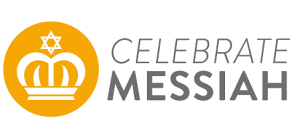The Superior Priesthood of Yeshua
Part 1: Hebrews 4:14-16
Part 1: Hebrews 4:14-16
Having looked at the concept of rest in chapters 3 and 4, the writer of Hebrews transitions to the superiority of the priesthood of Yeshua in chapter 5. But as a means of introduction, he ends the fourth chapter of Hebrews with a subject familiar to the Jewish believers he is writing to: Yom Kippur, the Day of Atonement.
To the Jewish people at the time of the temple, Yom Kippur was the one day of the year when they were made right with God—all the sins of Israel were atoned for through a series of very intricate and specific sacrifices performed by the High Priest. It was only on Yom Kippur that the High Priest was allowed to enter the Holy of Holies beyond the veil and come into the very presence of God.
The veil was not a delicate piece of material, the way we would envision a bridal veil. Rather, the word “veil” in Hebrew means a screen or divider or a separator that hides. The veil was a barrier to make sure that man could not carelessly enter into God’s presence, and therefore ultimately die. Even as the High Priest entered the Holy of Holies on the Day of Atonement, he had to make meticulous preparations. He had to wash himself, perform special sacrifices for himself, put on special clothing, bring burning incense to let the smoke cover his eyes from a direct view of God, and bring blood with him to make atonement for sins. Tradition even tells us that he had bells sewn on the hem of his robe so that he could be heard ministering in the Holy of Holies.
So the presence of God remained hidden from man behind a thick curtain throughout the history of Israel, except on the Day of Atonement, Yom Kippur. However, Yeshua’s sacrificial death on the cross changed all that. When He died, the veil in the temple was torn in half, from the top to the bottom. Only God could have carried out such an incredible feat because the veil was too high for human hands to have reached it, and too thick to have torn it. The measurements of the veil were 60 feet in height, 30 feet in width and four inches thick, according to Josephus. According to Jewish tradition, the veil was as thick as a man’s hand.
As the veil was torn, the Holy of Holies was exposed. Symbolically, God’s presence was now accessible to all. Imagine the shock on the faces of the priests ministering in the temple that day as they realized that something truly inexplicable had happened. I’m sure they thought it was something horrible. Instead, it is indeed good news to us as believers, because we know that Jesus’ death has atoned for our sins and made us right before God. The torn veil illustrates for us that because of what Jesus has done we can come to God boldly and with confidence.
Therefore, in light of these truths, that “we have a high priest who has passed through the heavens,” and that “we have a high priest who sympathizes with our weaknesses and has been tempted in all things as we are, yet without sin,” we are exhorted to do two things:
1. Let us hold fast our confession.
These Jewish believers were struggling with trials and the temptation to go back to the Judaism of their day. The writer of Hebrews is saying, in light of who Jesus is, hang on and hold fast to our confession, our profession of faith in Him.
2. Let us come boldly to His throne of Grace.
Unlike the observances of the Day of Atonement before Jesus’ death on the cross, we are not separated from God by a large foreboding curtain that only the High Priest can pass through one day of the year. Instead, all believers are encouraged to come confidently to His throne of Grace and find grace and mercy to help in time of need. Regardless of your situation, Jesus is always going to be there for you, each and every day.
Sign up for Celebrate Messiah email newsletters to receive more information on our ministries, events, and outreach to the Jewish people around the world:

 The Superior Priesthood of Yeshua: Part 2
The Superior Priesthood of Yeshua: Part 2